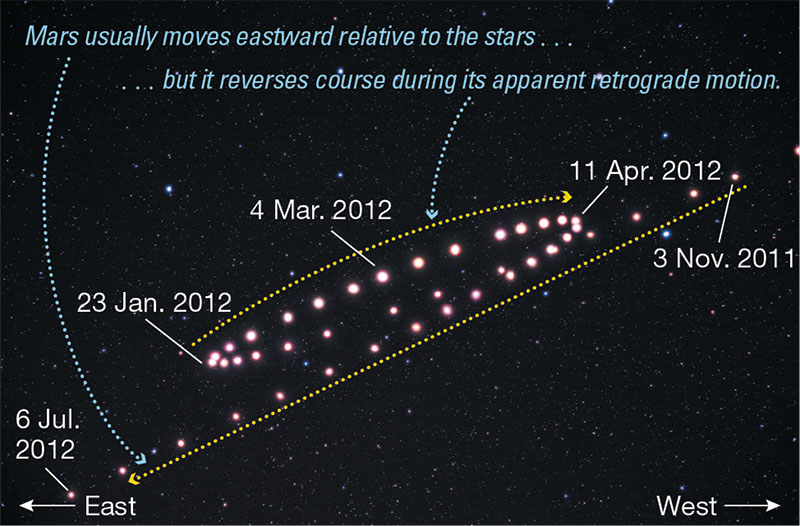The celestial objects that we see in the sky are the Sun, the Moon, stars, and planets. We have already discussed the Sun, Moon, and stars, so now it is time to turn our attention to the planets. As we’ll see, the seemingly strange “wandering” motion of planets in the night sky (Figure 2.33) played a very important role in human history.

Section Learning Goals
By the end of this section, you should be able to answer the following questions:
- How do we recognize planets in the night sky?
- Why do the planets “wander”?
Before you continue, take a few minutes to discuss the above Learning Goal questions in small groups or as a class. For example, you might discuss what (if anything) you already know about the answers to these questions; what you think you’ll need to learn in order to be able to answer the questions; and whether there are any aspects of the questions, or other related questions, that you are particularly interested in.
Group Discussion
Sky Motion
Before you begin this section, work in small groups to make a list of all the celestial motions visible in the sky that you have already learned about. Then compare all the lists from the different groups, to make sure that, together, you have a complete list.